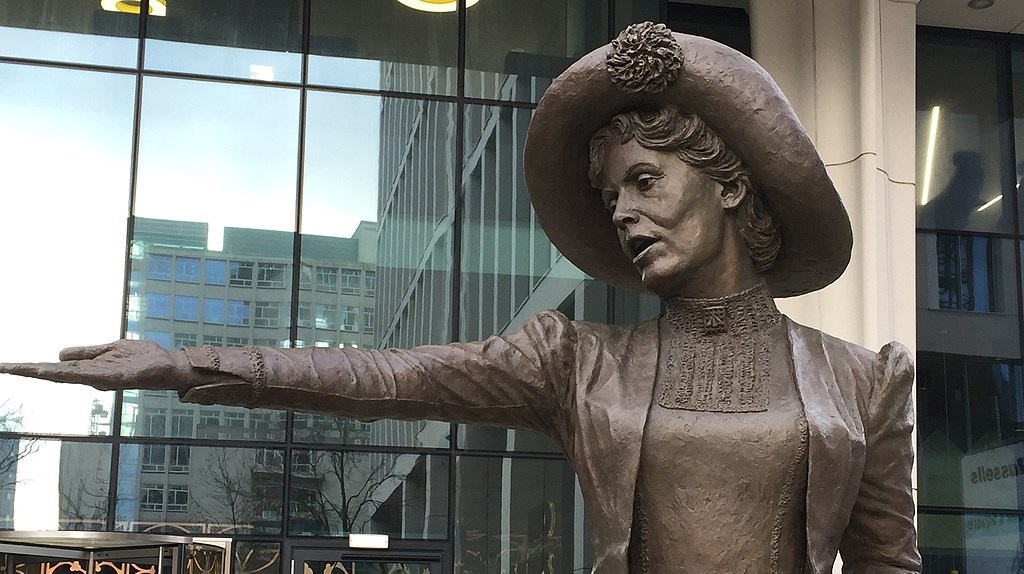Five Statues to a Better World: A Walk Through Central Manchester
Posted by Pete on 23rd Jan 2019
I had an epiphany the other day.
It wasn't at all to do with religion, no. This one was about a combination of radical politics a nd Manchester town centre!
I was up North visiting the parents for a few days and, while there, decided to go into town to catch up with a mate. She was coming over from the wrong side of the Pennines (Yorkshire), and I figured it would be the perfect chance to see the newly unveiled Emmeline Pankhurst statue on St Peter’s Square (for those of you unfortunate enough to never have been to Manchester, that's one of the two main public spaces in the city centre).
Getting the met (Manc-to-English translation: 'Tram') in to town, I jumped off right by Emmeline. It was pretty early on a Monday, a good three or four days after the grand opening, but she still had a sizeable audience admiring her and taking photos.
It's not hard to see why – the sculpture is a masterpiece (hats off to Hazel Reeves!), both artistically and politically. Pankhurst is depicted in stone as she was so often in life – standing on a chair, demanding women be given the vote. On the ground around her, she’s framed by a low, half-circle wall, reading "Deeds not Words" – the motto of her Women's Social and Political Union – on the inside, and "Women, Rise Up!" on the outside.

Britain's bumpy history, preserved
Anyway, I couldn't hang about too long as I was meeting my pal in Piccadilly Gardens, a few minutes up the street.
On getting there, I leaned up against the grand old statue of the Duke of Wellington as I waited for her to walk down from the train station.
It was here where I had the realisation that, now we've got Emmeline, there's a 10-15 minute stroll running south through central Manchester which every Leftist should take if they can find the time.
It’s a walk built around five statues. It’s also a walk with a moral trajectory: 'Onwards and upwards'.
It begins with the dregs of the Mancunian cityscape. That looming statue of the Duke of Wellington, for a start. Wellington was the aristocrat who, as leader of the Tory party, vigorously opposed both the expansion of the electoral franchise and the granting of full civil rights to British Jews in the early-1830s. A vile and reactionary political figure from every angle.
Walk a couple minutes toward Market Street and you meet Queen Victoria. Despite all the royalist fawning we get on British telly, Victoria was an out-and-out imperialist. She didn't accept the Empress's Crown of British-occupied India reluctantly and was a fervent supporter of blood-soaked British expansionism in the 19 th century, backing both the Anglo-Zulu War in southern Africa and Britain's 1878 invasion of Afghanistan.
But after you leave Victoria behind, things start to improve.
A turn to progressive politics
Walk 5 minutes down Mosley St and you'll come out onto St Peter's Square again, where we reunite with Emmeline Pankhurst – standing as a representative for all the radicals of first-wave British feminism.
Carry on, with the tramline on your right and you'll reach a pub called 'The Briton's Protection'. A grade II listed building, inside you’ll find the first ever murals commemorating those Mancunians murdered by state police in the Peterloo Massacre of 1819 as they protested the property bar on voting. Peterloo took place just a couple of minutes' away from here.
Keep going, there’s still one more t o come.
You walk on another 5 minutes to HOME cinema, on Tony Wilson Place. Out front stands a tall statue of a bearded man, his arms folded. On the pedestal is written simply 'Engels'.
Yes, Karl Marx's intellectual collaborator and best friend – who spent a great deal of his life in Victorian Manchester, writing The Condition of the Working Class in England based on the horrific living standards of the city's proletariat – now has a monument right in the middle of town. He was put up in 2017 to commemorate the German's contribution to the fight against capitalist exploitation in our city.
Thus, in the course of a short walk, you can take a thoroughly upward journey through the political architecture of Manchester's town centre – from Dukes and Empresses to Suffragettes and Socialists:
From villains to heroes.
